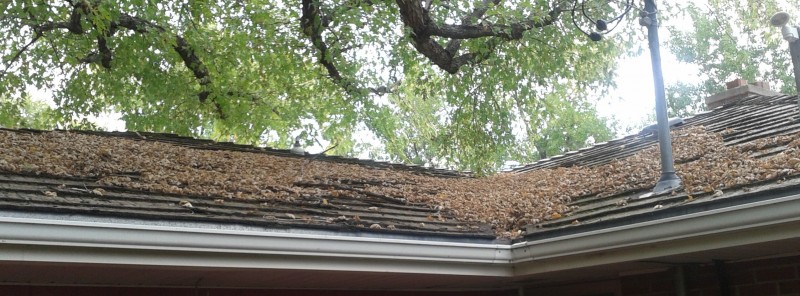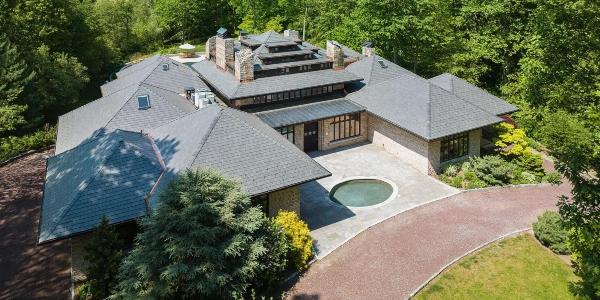Understanding Condensation Problems

By Alberta Allied Roofing Association.
Learn how condensation in your attic can affect your home, and how to identify and solve these issues.
Alberta Allied Roofing Association (AARA), the professional association for the steep-slope (residential) roofing industry in Alberta, Canada, answers many roofing-related inquiries, roof leaks included. Many people believe that a water leak or drip coming into their home means there’s an issue with the roofing system. While this might be true, it’s more likely that the issues are due to other things occurring in the home.
Alberta homes face significant temperature fluctuations in the winter, leaving them vulnerable to condensation leaks, which the roof system isn’t always responsible for. Read below to learn how condensation in your attic can affect your home, in addition to ways to identify and solve these issues.
Condensation is formed when warm moisture laden air cools down and some of the moisture is forced to fall out of the moisture saturated air. This happens because the warmer the air, the more moisture it can contain; so, if the warm air ends up in a colder place (such as your attic or against your windows) the excess moisture will fall out of the air, and if below freezing, will form frost/ice on any cold surface available.
The most common place condensation moisture shows up is in bathroom and/or kitchen fans. These generally show up when a warm spell moves in after a cold spell. The ice that has been accumulating (both inside the vent pipe and at the top of the vent on the outside of the vent pipe) melts and drips around the fan opening in the ceiling. These fan vents tend to collect very moist air by their nature, as they are venting out moisture created from showers and cooking. Bathroom fans should always be run an extra 15 minutes or so after the shower/bath is finished to help get the greatest amount of moisture through the vent pipe and out through the roof vent.
A second very common condensation drip occurs with skylights – particularly skylights in bathrooms. The metal and glass surfaces of skylights tend to be considerably colder than the rest of the bathroom, especially when the outside temperatures are very cold for an extended period of time. In addition, the skylight curbs are seldom insulated where they project up from the roof deck and therefore create a cold surface at the top of the skylight. The bathroom air also tends to have the highest humidity of any area in the home due to showering and running the sink faucet. These combine to create condensation on the edges of the skylight which then melts when it warms up. A common but rather short-term fix is to place a towel under the drip.
In addition to these common condensation collectors, condensation can occur anywhere there is warm air leaking into a colder space. Homeowners would commonly find that the underside of the roof sheathing and particularly the nail shafts protruding through the sheathing are covered in frost during extended cold spells if they were to check in their attics. Most of this moisture drips off into the insulation, and as long as there is proper attic ventilation it will be quickly dried up without causing any long-term issues, or ever reaching the finished ceiling level of the house. However, during extended cold periods, the amount of frost build up can sometimes grow to the stage where when it melts, it does reach the attic side of the finished drywall or other finished ceiling material and then it can sometimes find a hole in the plastic vapor barrier and cause a ceiling stain or leak. Often the first hole in the vapor barrier the water finds is in an electrical light box, and this is why such leaks commonly find their way into an electric light bulb.
Some of the main causes of condensation problems in the attic area and also of roof ice damming are:
-
The adequacy of the soffit and roof ventilation. (Minimum of one square foot of ventilation for every 300 square feet of interior heated ceiling area, with a 25%-75% maximum split between soffit and roof vents.)
-
The integrity of the vapor barrier [acoustic sealant sealing all edges, gaps and overlaps (or lapped minimum 4”) on poly, around electrical boxes, pot lights, ceiling height changes etc.].
-
Poor or non-existent cross cavity ventilation in cathedral ceilings and low-slope ceilings [double the ventilation is required by code on 2 in 12 (9.5 degree) and under roof slopes].
-
The adequacy of the insulation (minimum of R-32 in ceiling with great care taken to leave soffit ventilation space of at least 2.5” by using proper insulation stops or other means).
-
The overall humidity level in the home. (Number of people living in home, cooking methods, plants, poorly functioning humidifiers, etc. all have a great bearing on house humidity).
As can be clearly seen from the above causes, the roof installation has very little to do with causing condensation drips in a home, and these leaks cannot be repaired from the roof. In spite of this fact, roofing companies are usually the first call a homeowner makes when they have a drip coming from their ceiling.
In addition, unless they are well educated in the causes of condensation problems, many homeowners want their condensation issues to be corrected by the roofer, and seem to feel this should be included with the roof job. There is often a reluctance to accept the fact that their water dripping problems are not roof related. One general consideration is that the majority of new condensation leaks will show up in the winter when a warm spell follows a cold spell. If you get a leak in the summer that shows up during a rainy period it is probably a roof leak; if you have a leak show up in the winter it is probably a condensation issue (or an ice dam problem).
Almost all condensation issues must be addressed in the attic. Bathroom and kitchen fan vent pipes must be properly insulated with a well-sealed vapor barrier and properly attached and sealed at both the roof and ceiling levels. In addition, a moisture trap is often required in the vent pipe line to completely address this issue. This work would generally be in the $500 per vent range. If there are leaks in the vapor barrier they must be sealed – usually with a 2-part urethane foam. Insulation values may need to be increased and leaking points in the building envelope properly sealed – usually with urethane foam as well.
Roof venting should be assessed since soffits are often blocked and need to be cleaned out, and on older homes the wooden soffits seldom have adequate ventilation screens. Extra roof vents can also be added and cross ventilation caused by mixing whirly birds, attic gable and passive roof vent systems often needs correcting. The living patterns of the home occupants may need to be adjusted or a dehumidifier installed. Cathedral and low slope rafter ventilation spaces may need to be developed or increased and this is a big job that is usually best done while replacing the existing roof material during a re-roofing project.
While a larger building envelope specialized roofing company will have the expertise to identify and coordinate the repair of both condensation and ice damming problems, most roofing contractors are not prepared to take on this role. The solution can often be a mixture of correcting a number of the issues identified above and including other analytical methods such as infrared temperature imaging, etc. This can become expensive but it is unlikely that a band-aid solution will bring much long-term satisfaction to the homeowner or do much to establish and maintain the professional credibility of the company you have hired. An initial consultation is generally fairly inexpensive – around $300, and from there the scope of work required to properly identify the existing building envelope system issues and a ball park estimate of proposed work can be pursued.
AARA has roof consultants as member companies and they can also do this initial assessment work and coordinate the project with specialized roofing contractors. Another option is to bring in building envelope specialists for assessment and project management.
Have a question? AskARoofer.
Learn more about AARA in their RoofersCoffeeShop® Directory or visit www.albertaroofing.com/.
Original article source: AARA










Comments
Leave a Reply
Have an account? Login to leave a comment!
Sign In